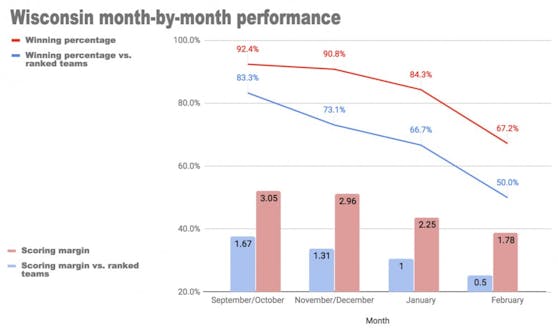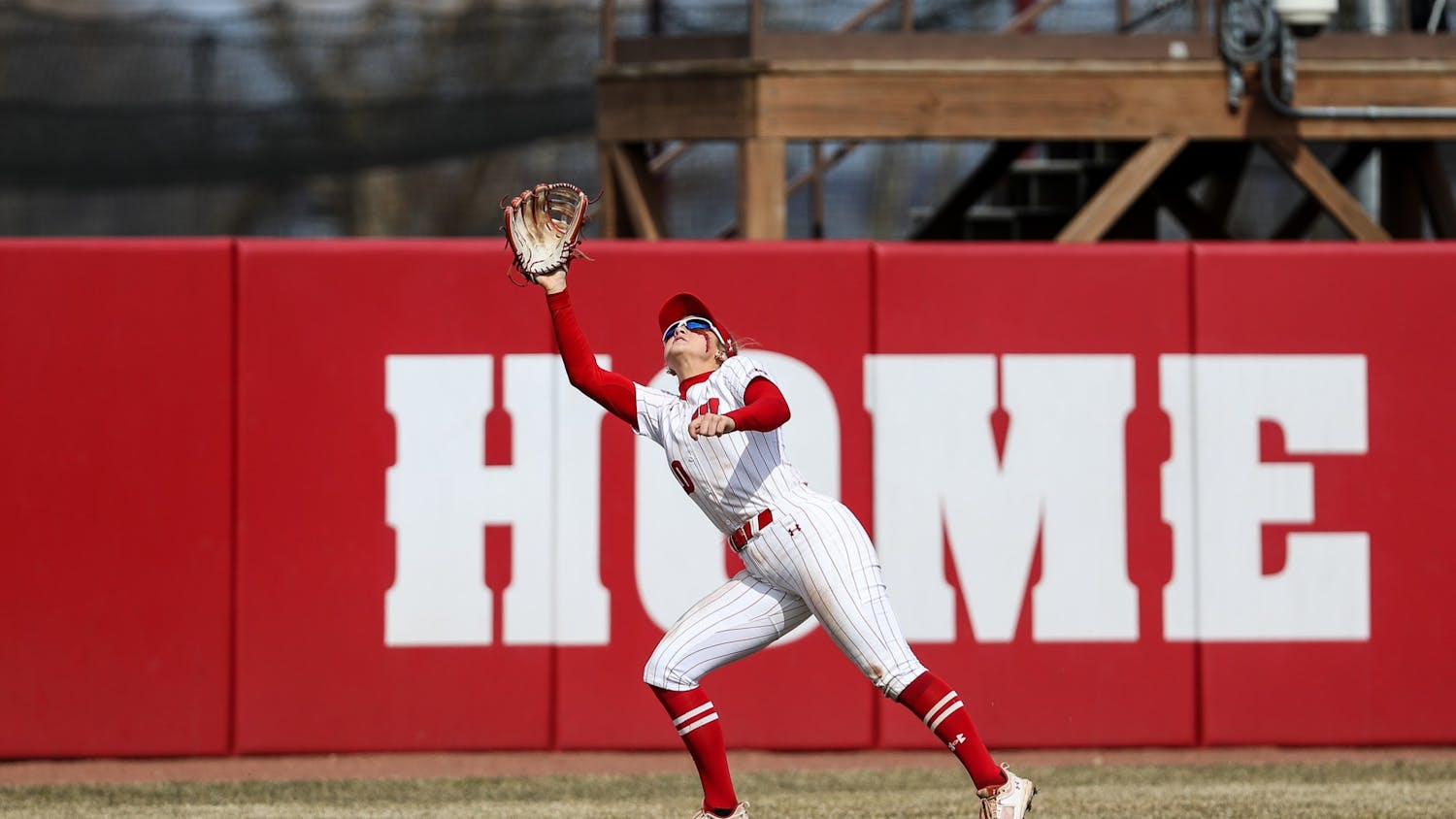Four weeks ago, Wisconsin’s women’s hockey team travelled to Bemidji, Minnesota sporting a 16-game unbeaten streak against the Beavers — and promptly dropped the series opener 2-1.
It was a surprising setback for the then-top-ranked Badgers, but a quick glance at the calendar reveals a detail that makes the result more explicable:
The game was played on Feb. 1.
Over the past five seasons, February has been Wisconsin’s kryptonite, as the Badgers have amassed a less-than-stellar 18-7-7 record.
Sub-par performance in the shortest month of the year is just part of a worrying trend for the Badgers, who have consistently declined over the course of the season in recent years. Since the 2014-’15 season, Wisconsin has posted a significantly higher winning percentage and goal differential before the mid-season winter break than after it, with the team often appearing to lose steam after dominant starts.
Four years ago, the Badgers came out of the gate like a team possessed. After their first 11 games, they sported a staggering 58-2 goal differential. They ultimately stretched their winning streak to 18 games with a pair of wins over rival Minnesota. Come February and March, the Badgers could take only one of four games against their rivals, including a season-ending loss in the Frozen Four.
Last season was much of the same, as Wisconsin raced out to a 24-1-0 start before finishing just 7-4-2 down the stretch.

Wisconsin boasts one of the best conditioning programs in collegiate women’s hockey, one that current and former players say is an envy of even the nation’s other top teams. The team stays on campus in the summer, and strength coach Jim Snider has the Badgers physically ready at the highest level from the moment they hit the ice in September.
As a result, Wisconsin dominates teams early in the schedule who simply can’t keep up with the Badgers’ skating and conditioning.
“I’m kind of in awe the first couple games at how good of shape we’re in, and we just don’t get tired,” senior defender Maddie Rolfes said. “Being here over the summer and Jim keeping us in shape; we’re ready to play, we’re ready for overtime, we’re ready for double shifts, we’re ready for anything.”
The results speak for themselves, as Wisconsin has put up a staggering 92.4 winning percentage in September and October since 2014.
But the flip side for the Badgers is that their conditioning advantage — so pronounced in the season’s early months — narrows as the season goes on and opponents round into form.
Wisconsin’s scoring margin drops from plus-3.05 in September and October to just plus-1.78 in February: still an elite mark, but not the dominant margin of a national championship favorite.
Part of the decline can be attributed to a tougher late-season schedule, as the Badgers play exclusively WCHA games after the holiday break. But when Wisconsin’s performance against ranked teams is split out, the same patterns are apparent. Since 2014, the Badgers are 21-5-2 against teams in the USCHO.com top-10 before Jan. 1 and just 11-9-8 after the turn of the new year.
Not everyone on the team considers that slide an issue, however.
“In the long run, that’s good for us because we’re getting everyone’s best shot to begin with, and now we’re playing good teams all the time,” senior forward Emily Clark said. “It’s a tough league, and we may have a couple more losses than we have had in the past, but at the end of the day it doesn’t matter how many losses you have, it’s when you have them.”
Women’s hockey’s postseason format — an eight-team, single-elimination tournament spread out over two weekends — doesn’t advantage the Badgers’ superior conditioning and depth. Neither do the commercial breaks included in the Frozen Four games that give teams a breather and allow them to rely on their top two lines more heavily than in regular-season back-to-back series.
Wisconsin’s recent postseason disappointments are well-chronicled: The Badgers have made five straight Frozen Fours but haven’t come away with a title to show for it. This team, led by the dynamic senior duo of Clark and Annie Pankowski, with support from skilled freshman forwards Sophie Shirley and Britta Curl, is better constructed to match up against the top lines of Minnesota, Northeastern and Clarkson.
“We just have to worry about, as [head] coach [Mark Johnson] says, what’s between the ears. We know we’re skilled, we know we have the right personnel,” Clark said. “It’s all about everyone getting on the same page and everyone being ready mentally to play a full 60 minutes and play to our potential because we’re pretty successful when we do that.”
Luckily for the Badgers, the season isn’t decided in February. Concerns about regular-season slumps come only with the team’s underperformance in the postseason, and they’ll evaporate immediately if they can raise a trophy come March.






